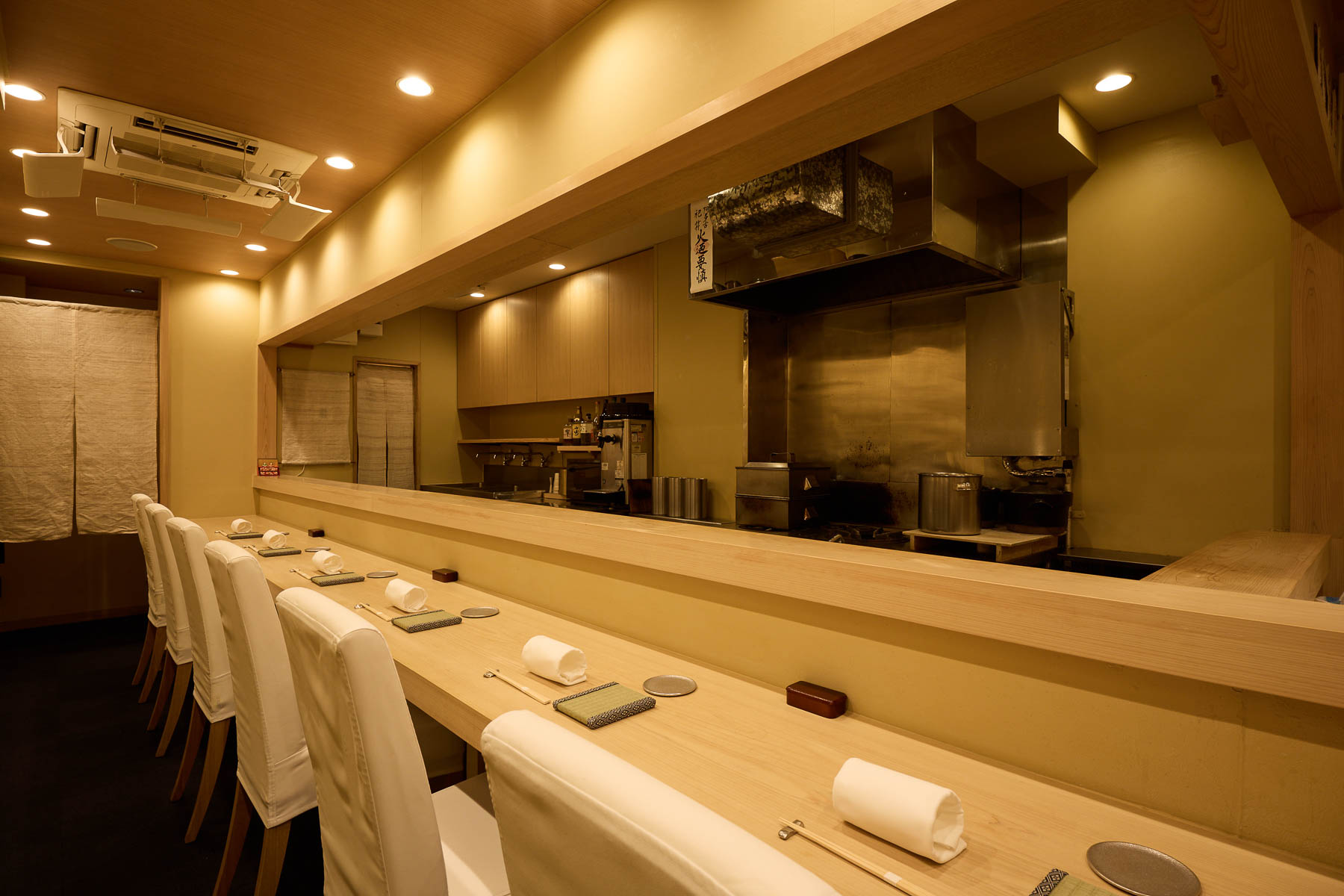
Tokyo
Kawada
かわだ
Tucked away in Tokyo’s historic neighborhood, Ningyocho Kawada offers a deeply personal take on Japanese cuisine. Opened in 2019, the restaurant is the vision of Haruji Kawada, who spent 13 years at Ginza’s Iyuki before setting out on his own. His signature dishes, such as simmered Yodo daikon and taro stalks, highlight the deep umami of the carefully prepared dashi. The omakase menu here changes monthly, reflecting the shifting seasons.
Kawada’s restaurant is located in Ningyocho, the center of the performing arts during the Edo period. The entrance is located in the basement of a building where three restaurants stand side by side. On nights when the restaurant is fully booked, a traditional Japanese umbrella is placed outside, a subtle but elegant gesture when no additional guests can be accommodated.
Inside, a six-seat counter creates an intimate setting where guests interact closely with the chef. The close proximity makes sure each dish is served at its ideal temperature, where hot dishes arrive steaming and cold dishes remain perfectly chilled. Kawada values this connection, saying, “I can also sense exactly what guests are looking for and of course, see their reactions.”
The curated drink menu offers sake, wine and whiskey to suit every preference. The sake list showcases renowned vintages from across Japan, including Haneya from Toyama Prefecture and Kamogata from Okayama, chosen to unfold the cuisine’s delicate flavors.
CUISINE
Showcase the best ingredients of the season
Kawada refreshes the omakase menu every month to showcase the best ingredients of the season. The meal follows a traditional sequence, beginning with delicate appetizers, followed by steamed rice or sushi, a grilled dish, a deep-fried course, sashimi, soup, a simmered dish and a final rice course before dessert.
At the heart of Kawada’s cuisine is the dashi, the delicate yet profoundly flavorful broth that serves as the foundation of many Japanese dishes. Crafted with precision, the dashi is designed to enhance the natural umami of kombu and bonito flakes. The kombu is carefully heated multiple times, ensuring the perfect balance of flavor.
The simmered taro stalks pay homage to Kenichiro Nishi, the legendary chef of Kyo Aji, whose treasured recipe Kawada continues. Thickened with Yoshino kuzu and finished with a touch of ginger, the dish is served in a beautiful lacquered bowl adorned with a design of Setsugetsuka—snow, moon and flowers.
Yodo daikon, a traditional Kyoto vegetable, is a dish to remember. Served during winter months, Kawada cooks the round daikon until just before it falls apart, and pairs it with rape blossoms—an early sign of spring. The Matsuba crab from Tsuiyama in Hyogo Prefecture is boiled on the shore to preserve its sweetness, and served at the restaurant with its rich miso.
The final rice course changes with the seasons. Served in a traditional Banko-yaki clay pot, the rice is cooked with seasonal ingredients such as bamboo shoots in spring, fresh ginger in early summer, matsutake mushrooms in autumn and crab porrige in winter.
INGREDIENTS
Every ingredient at Ningyocho Kawada is sourced from trusted suppliers. The sashimi selection primarily features Akashi sea bream, though flounder and flatfish are used seasonally. In the winter, Matsuba crab from Tsuiyama Fishing Port is served from November through February.
The cuisine’s foundation lies in its core ingredients. Koshihikari rice from Niigata provides the ideal texture, while the umami-rich broth is built on Rishiri kombu from Hokkaido and bonito from Tosa in Kochi Prefecture. Fresh wasabi from Gotemba adds just the right balance of heat and fragrance. Yodo daikon, the large round winter radish, has been cultivated in southern Kyoto for generations.


CHEF
Haruji Kawada
ANTIQUE TABLEWARE
Dining at Ningyocho Kawada extends beyond food to its exquisite selection of tableware. The collection features antique Baccarat glasses, some over 100 years old, used for special occasions. Some dishes are pieces of history such as pottery from the Ming Dynasty that are approximately 400 years old. He enjoys sharing their history with guests, often turning plates over to explain how to identify markings from different eras.
Course
- The price includes our booking fee of ¥8,000
- The price includes our booking fee of ¥8,000










